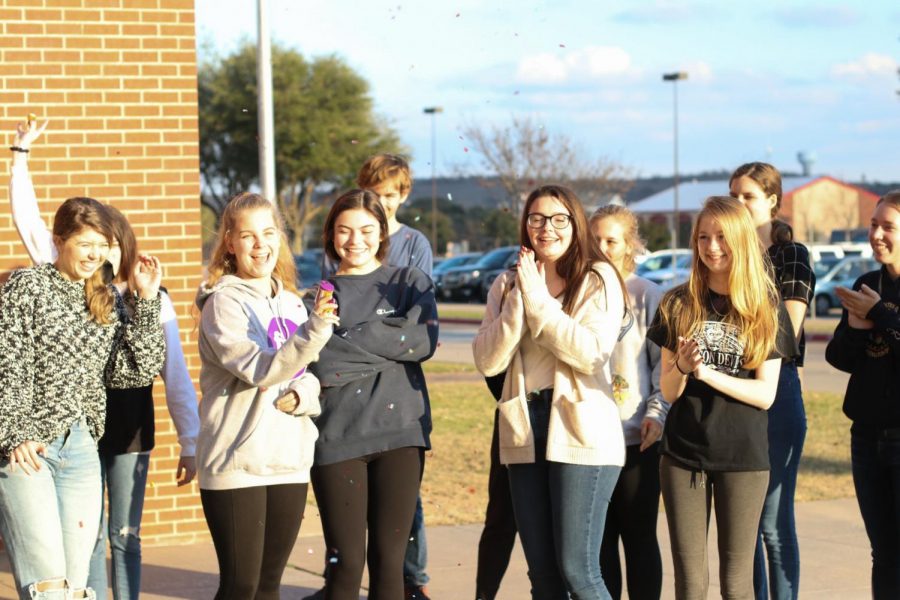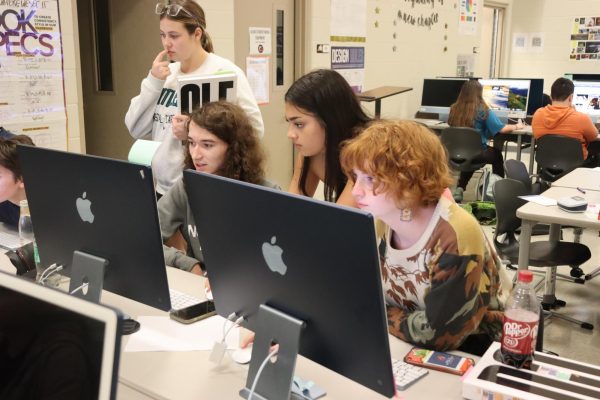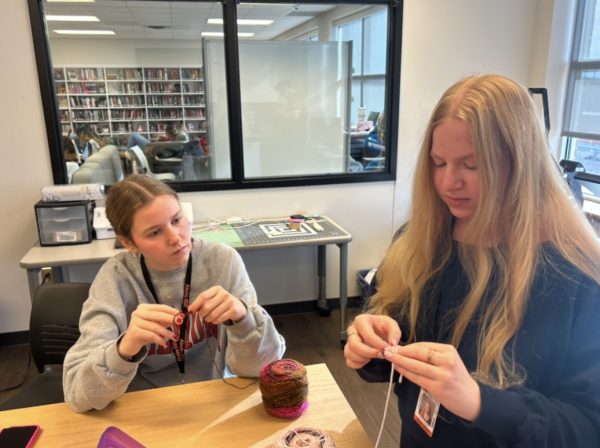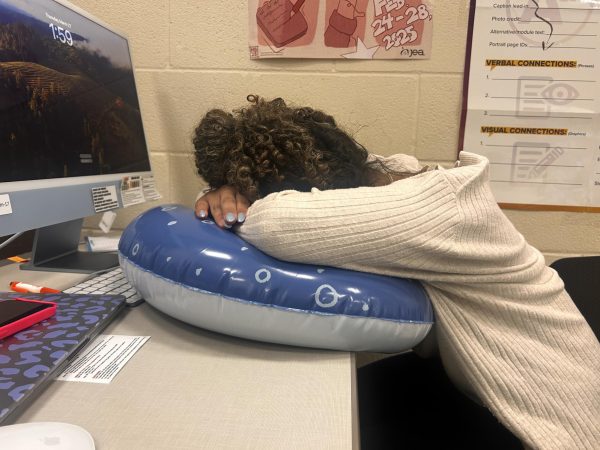What You Don’t See
Ledoian staff works to publish 2020 yearbook
Walking in the door of room 101 during second period, the upperclassmen on yearbook staff are planning, designing, editing, and then revising pages to make sure they are as perfect as possible. Editors move about the room checking in with each staffer to see how they can help. Two other people set up the photo backdrop and two flimsy ring lights to prepare for the students coming by during Flex. Snacks are scattered on a table, feeding the productive chaos.
Although they often go unnoticed, the yearbook staff tries to appear at every event, game, dance and performance all year, taking pictures so that no one forgets a moment of their high school life. When students think of the yearbook, they think of the over-400 page history book that immortalizes their favorite moments of high school, but usually forget about the 36 students who spend hours upon hours making it.
“I chose yearbook because I really love photography and I wanted to be part of the group of students who document the history of our school year,” freshman Kaley Schabel said. “I think it’s really cool how people can look back on their old yearbooks and remember all their old friends and activities and I wanted to be part of making that happen.”
While the staff is small, they are certainly mighty. With over 400 pages in the yearbook, that means that each staffer is responsible for roughly 11 pages which they create using Adobe InDesign. Students also sell and design ads, gather coverage for the people section, directories and index, in addition to creating pages about student life, athletics, academics and organizations.
For each content page, the staffer in charge must gather their coverage, design their page, edit all the pictures, caption the pictures and write a feature, if needed, about the organization, event or student life topic featured on the page.
After the staffer feels it is ready, the page starts to go through edits by the editors. The editors include sophomores Ava Bathurst who is the photo editor and Faith Emmitte, the copy editor, juniors Claire Kennedy, the organizations editor, and Ashlyn Vozeh, the sports editor and seniors Reagan Petersen and Merritt Bush who are co-editors in chief.
“Being an editor means a lot of people have to trust that, for one, I know what I’m doing, and two, that I’m going to get the work done,” Bathurst said. “It’s a lot of responsibility, but I feel like it yields high rewards. I feel like the editors do more work than some people see. We spend an outrageous amount of school in the yearbook room and we’ve come to call it home.”
Using Trello, an online project management tool, the page is first sent to Bathurst to approve any and all photos on the page. After, it is returned to the staffer to begin writing captions and the page’s feature. Then the spread is sent to Emmitte, who verifies that all captions and stories are grammatically correct and follow Associated Press style. The page is sent back to the staffer who makes any corrections that may be needed and then it goes back to Bathurst to again check the photos’ resolution.
Once the staffer makes the corrections needed, they send it to either Petersen or Bush to check design and look over before sending it to be “proofed.” Adviser Emily Arnold then sends the files of the pages to Balfour publishing where proof pages are generated and mailed to the school.
Once those pages arrive, the staff has three days to examine the proofs and make final corrections to the files. For the yearbook staff, good enough is not. They strive to produce the best yearbook possible.
“I think the editing process we go through is very well thought out and especially helpful for me individually,” sophomore Victoria Jordan said. “Everyday I walk into the yearbook room and know exactly what I need to do that day. While [the editing process] is detailed, I think it has to be in order to get an amazing product at the end of the year, and it really works for me.”
Making the yearbook takes much more time than a school day or even a school year allows. So to get a head start and prepare themselves for the upcoming year, several of the editors attend journalism or yearbook camps over the summer to learn how to improve what they do and start planning the yearbook.
“Reagan, Arnold and myself went to a two-day camp put on by Balfour last summer and that’s when we made a lot of decisions for this year,” Bush said. “The first day was really a lot of planning and the second day we started putting all of our plans in action. We decided everything that we wanted to do as far as being editors and for the yearbook in general, like the theme.”
Unlike previous years, the yearbook staff is now split into two classes, one for the upperclassmen and one for the freshmen. Since there are two classes, it is harder for the editors to communicate with all staffers resulting in work nights almost every Thursday. All staffers are highly encouraged, but not required, to come. The work nights start right after school and last until as late as 10:30 p.m.
“I constantly have about 20 tasks on my to-do list,” Petersen said. “It is really difficult for me because I want to be able to be positive and encouraging all the time so I put a lot of pressure on myself to stay positive even when I am extremely busy or stressed. I never want my staffers to think I’m too busy to help them or talk to them. If I’m overwhelmed then I stay at the school until I’m done. I spend as many hours as it takes to get what I need to get done. You won’t feel less overwhelmed by not doing anything. I just rearrange my schedule to get what I have to get done.”
The students and teachers who order yearbooks aren’t the only ones who see the fruits of the staff’s labors. With last year’s yearbook, What You Don’t See, the 2019 staff has been honored and received numerous awards. In fact they are still receiving recognition for their hard work. This April, the staff is being recognized in Nashville, Tennessee at the JEA/NSPA 2020 Spring Convention.
“Honestly, the awards don’t matter that much to me,” Emmitte said. “I value our work so much already that I don’t need to get an award to feel like my work pays off. Sure, they’re nice and all, and I’m glad that our work gets recognized on a national level, but the satisfaction of publishing a book for my school and seeing my peers flip through the pages is entirely fulfilling to me.”
With the staff sometimes spending over 14 hours together in the journalism room, it’s hard to not become close. In many extracurricular activities and clubs the participants become like family, and yearbook is no different.
“The people in yearbook are literally like my second family,” Bush said. “ I’m with them more than I’m with my actual family. Over the past two years, I’ve grown extremely close with everyone on staff, even the people that just joined this year. I feel like I can be my true self around them because we spend so much time together.”














